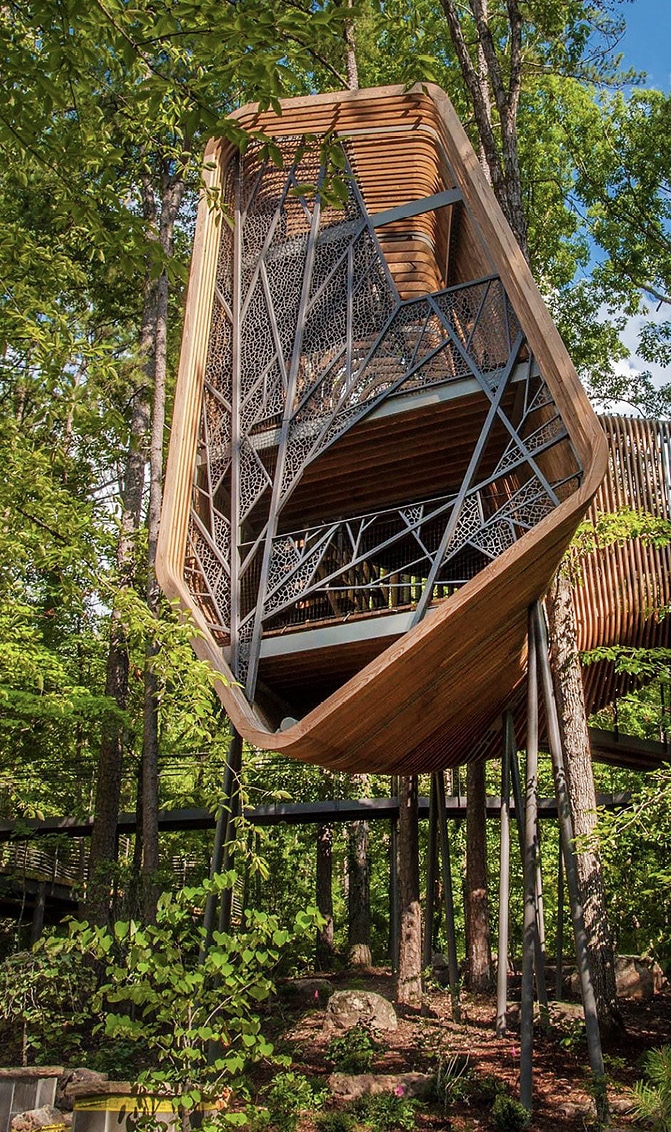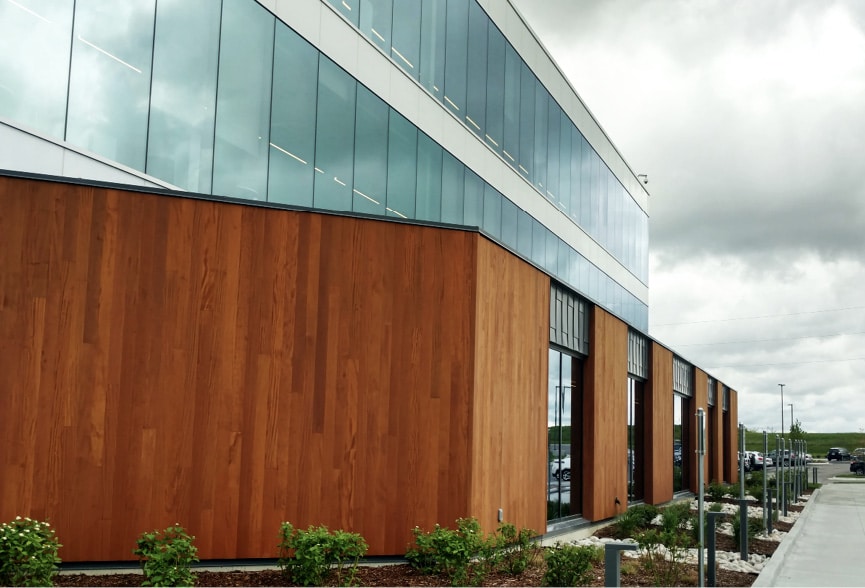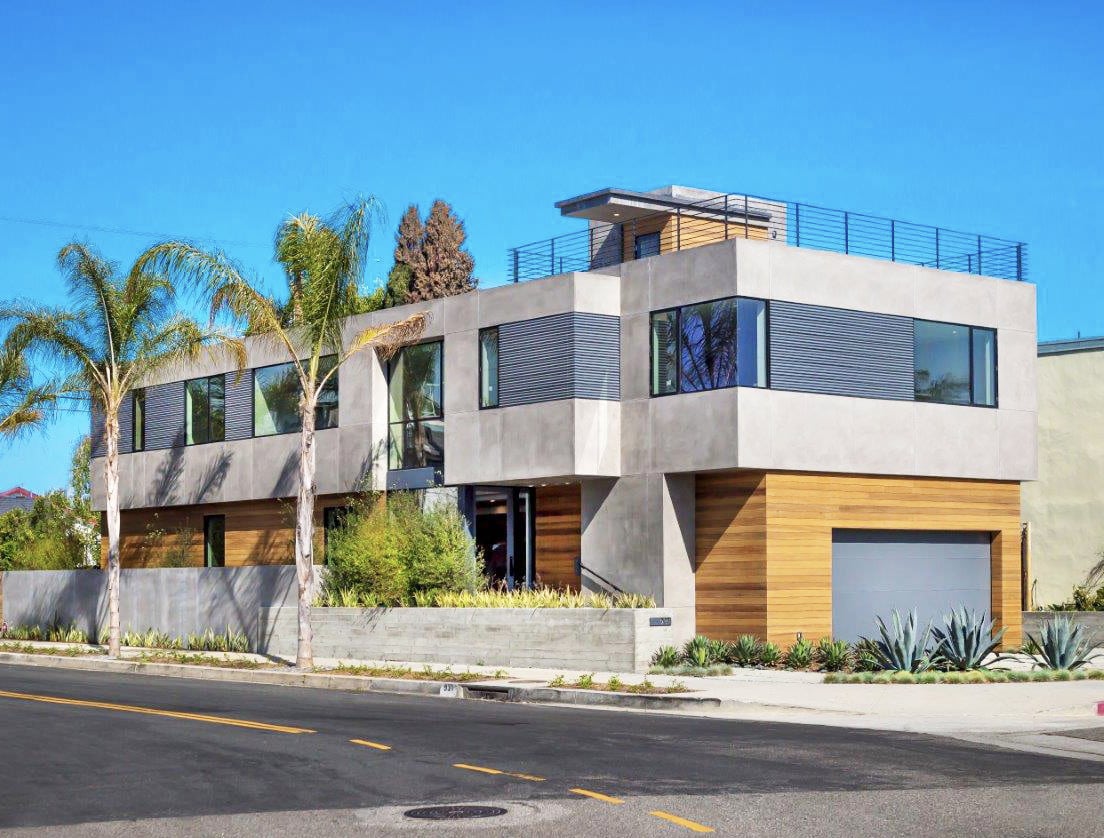The experts at Wood Haven explore why you should choose wood.

The “wave wall” at Kansas City University of Medicine and Biosciences in Joplin, Missouri [Photo: Courtesy of Wood Haven]
There’s just something about wood. Despite the popularity of man-made materials like steel, brick, and concrete, something compels us to return to our roots. It’s the aesthetics and design options that drive Jim Guffey, president of Wood Haven, and his small team of passionate woodworkers in their exterior wood cladding and custom millwork shop in Perry, Kansas.
“Nothing out there really looks as good as wood,” he says. “Traditionally wood is the best choice, and it is really the only renewable resource we have.” Sustainability is a top priority for Guffey and his team, who aim to source from areas that farm responsibly and have the FSC certification whenever possible.

The treehouse at Garvan Woodland Gardens is a standout example of the possibilities. [Photo: Courtesy of Wood Haven]
High Design
Guffey’s shop works with many species of hardwood, giving consumers a variety of options and finished looks. While Wood Haven often uses Cedar, Cypress, and Ipe, you can also get thermally modified woods like Ash and Hackberry for increased durability and hardness. Traditional Japanese-style burnt wood Shou Sugi Ban is on the way, too, for a darker look.
The custom shop also uses many techniques to keep its product versatile and offers many options like special widths and trims. In the case of the “wave wall” at Kansas City University of Medicine and Biosciences in Joplin, Misssouri, Wood Haven designed hundreds of unique supports to create the decreasing frequency sine wave and used special milling to allow the rainscreen to travel across the windows. “That was a pretty crazy project that required a fair amount of head scratching, but we got it done and it looks great,” Guffey says. “I always say give us a drawing and we will figure out a way to make it happen.”
The company recently took on a project well outside its norm—a treehouse at Garvan Woodland Gardens in Arkansas. “The biggest deal was we had to figure out a system for the ribs and fins and how to clamp it all together. People thought we were bending wood, but really we were using finger jointing techniques on CNC milled curves and gluing them to straight sections. Accuracy had to be held to one-tenth of degree. It was frustrating at times, but at the end it brought quite the smile,” says Brad Keirns, operations director at Wood Haven.
FROM OUR NOV+DEC 2018 ISSUE

The preferred publication of leading green professionals.

An FSC-certified Garapa rainscreen was vertically installed at the Dairy Farmers of America in Kansas. [Photo: Courtesy of Wood Haven]
Beauty Meets Functionality
Wood Haven’s most popular product is the Rainscreen Clip system. This invention combines the timeless look of wood cladding with functionality, offering protection from rain and rot. An FSC-certified Garapa rainscreen was vertically installed on what has frequently been referred to as one of the most beautiful buildings in Kansas—the home of the Dairy Farmers of America.
The cladding is installed slightly off the wall to create a gap between the wood panels and wall. The result is a drainage channel and air chamber that helps water evaporate, keeping the building dry and rot-free for life. “Water is great at following and getting into places you don’t want it to be. A window sill will rot out in nothing flat,” Guffey says. “If you have that break between the cladding and wall envelope, even in a big rainstorm, it never reaches a point where you have a problem. Having that drainage channel is pretty important.”
In hot climates, using a wood rainscreen can also help to reduce energy costs. The gap behind the boards increases air flow and decreases the amount of heat transferred directly to the building.

[Photo: Courtesy of Wood Haven]
Ease of Installation
Wood Haven’s Rainscreen Clip system is unlike anything else. Just as its name implies, it is a clip system, but the boards arrive with pre-drilled furring strips and fasteners for easy installation and perfect alignment. “We greatly cut down the time of the install and the project as a whole,” Keirns says. “Rather than sending out an instruction manual with all these little pieces, we have everything set up and ready to go when it gets there. It’s key. We try to make it self-explanatory.” The system is also easily deconstructable and reusable if needed.
The company is currently working on a new clip system that would cut the current install time in half. Keirns says, “We are always trying to be a little faster. The more you do anything over and over again, you want to make it easier for the installer—quicker and better.”
EXPERT TIPS
Guffey has been in the wood business since the 1980s, and he’s learned quite a few tricks along the way. One of the biggest mistakes he’s seen over the years is the installation of wet wood cladding, which can lead to shrinking, warping, and cupping. “By wet, I mean wood that was sold wet. We run into it all the time,” he says. “The biggest thing is to make sure your product says it was kiln dried, not air dried, and then I would still check it with a moisture meter.”
Guffey also suggests finishing your wood cladding all the way around to protect it and increase durability and longevity.
WHAT IS THERMALLY MODIFIED WOOD?
A species of wood can be thermally modified when it is soft and not rot resistant. It’s heated up to 400 degrees, causing chemical changes to occur and making the wood rot resistant while increasing durability and hardness. No chemicals are added to the wood during this process.
